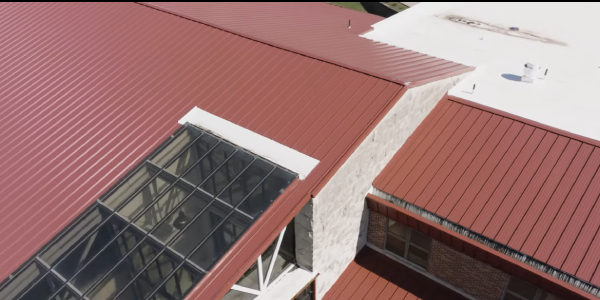Key Differences Between Standing Seam and Exposed-Fastened Metal Roofing

By Colin Sheehan, RCS Reporter.
Join a panel of metal roof experts as they examine the pros and cons of standing seam vs. exposed-fastened metal roofing.
In the first part of Insights with Experts video series on Wind Design, Dustin Haddock from S-5!® discussed the purpose of WindClamps and how they can help contractors avoid costly wind uplift damages.
In part two of Insights with Experts on Wind Design, Dustin and colleague Mark Gies go back to the basics in a discussion about the key differences between standing seam and exposed-fastened metal roofing with a panel of experts from FM Global, Metal Construction Association (MCA), and Metal Building Components Inc., (MBCI).
The experts discuss:
-
The pros and cons of both roof types
-
The history of structural standing seam metal roofs in the 20th century
-
The different ways these roofs are seamed together
Panelist Ken Buchinger, formerly with MBCI, explains that a crucial con of exposed-fastened roofs is their tendency to leak. When fastening, it is easy for crews to miss the purlins, often leaving a hole that will need to be treated (and continually re-treated) to prevent water intrusion.
“Certainly, the concealed clip standing seam is much preferred to [exposed fastened] for larger buildings where you’re going to have [significant] thermal expansion,” said panelist Dick Davis from FM Global. “[Standing seam] is also less likely to leak.”
The panel then dives into what exactly a standing seam metal roof is, as well as some of the products S-5! has made for contractors to use in conjunction with them.
Although the origins of standing seam go back 1200 years, the “structural” standing seam originated in the 1930s. It wasn’t until the mid to late 90s that the structural standing seam became a popular choice. This movement towards standing seam started in part by new energy codes, which made many smaller buildings adopt standing seam to achieve the necessary U-factor as per code ECC and ASHRAE 90.1.
“They require a standing seam metal roof [to have a layer of insulation] between the roof and purlins,” said explained Haddock. “Since the early 90s, two of the most common [types of standing seam] is where we’re going to spend our time. A mechanical fold and the snap-together seam...Within the history of metal roofs, a standing seam metal roof has been around as long as metal roofs have.”
Watch the entire video for more information on standing seam metal roofs and S-5! WindClamps.
Learn more about S-5! in their RoofersCoffeeShop® Directory or visit www.S-5.com.























Comments
Leave a Reply
Have an account? Login to leave a comment!
Sign In